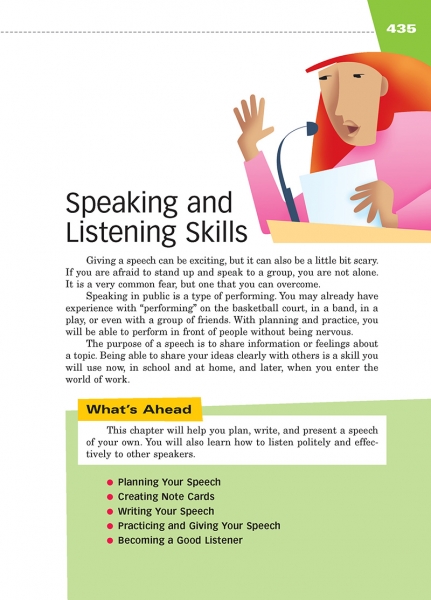
Start-Up Activity
Play a few famous speeches for your students. You can find many of these compiled on YouTube.
Afterward, ask students what they noticed about these important speeches. They may offer comments such as the following:
-
The topics were really important.
-
The speakers spoke slowly, clearly, and loudly.
-
The speakers connected emotionally with the audience.
-
Great words conveyed great ideas.
Help students understand that a speech should be much more than simply reading an essay aloud. A speech is its own art form, with the writer performing at the center of the communication situation.
Think About It
“Body language is a very powerful tool. We had body language before we had speech, and apparently, 80 percent of what you understand in a conversation is read through the body, not the words.”
—Deborah Bull